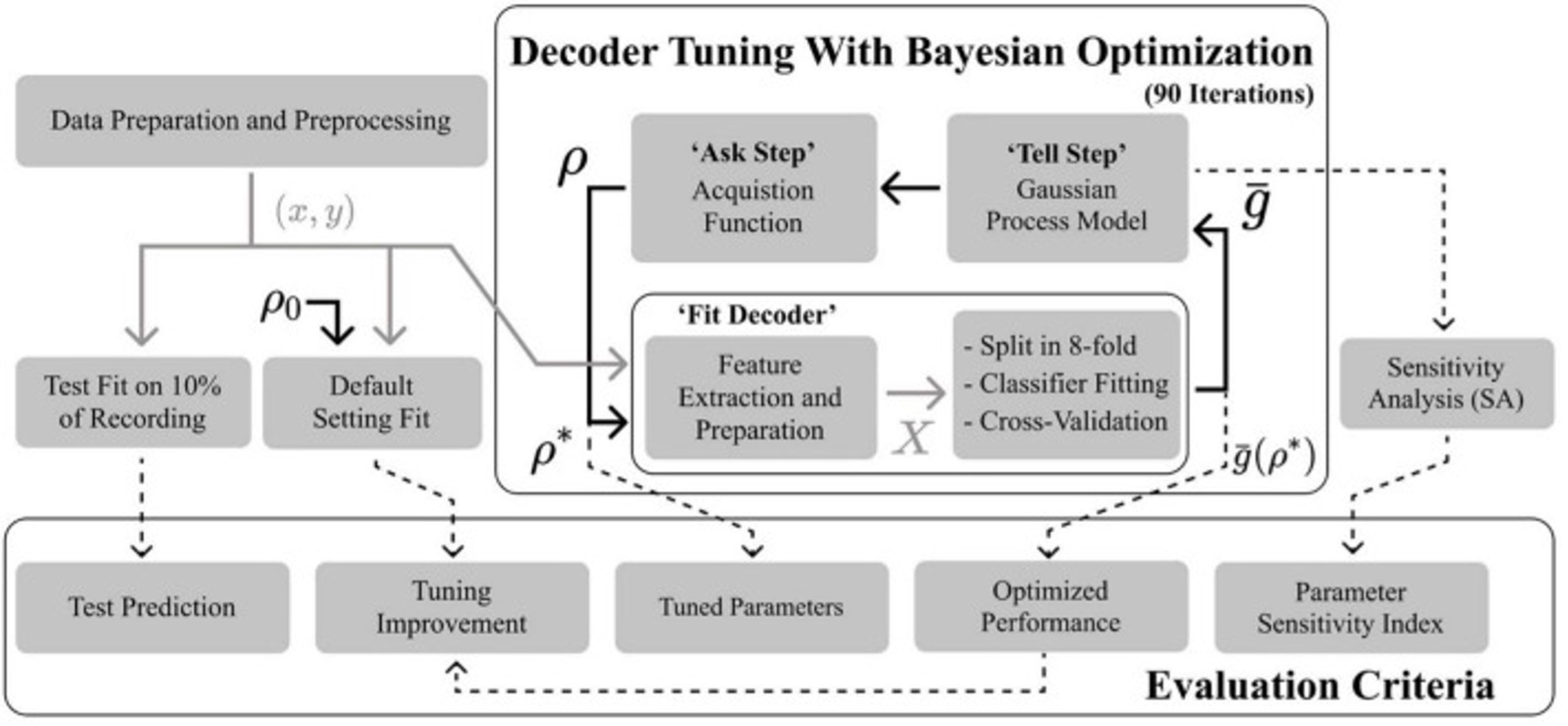Hyper-parameter tuning and feature extraction for asynchronous action detection from sub-thalamic nucleus local field potentials.
Machine learning is a tool used to identify patterns in brain activities in real time in various brain-computer interface (BCI) applications. Usually, this requires a large number of parameters, which are typically found through exhaustive trial-and-error, manual search, or intuitive experience. Here, we proposed and tested an optimised method to automatically tune the large number of parameters and improve accuracy.
Decoding brain states from subcortical local field potentials (LFPs) indicative of activities such as voluntary movement, tremor, or sleep stages, holds significant potential in treating neurodegenerative disorders and offers new paradigms in brain-computer interface (BCI). Identified states can serve as control signals in coupled human-machine systems, e.g., to regulate deep brain stimulation (DBS) therapy or control prosthetic limbs. However, the behavior, performance, and efficiency of LFP decoders depend on an array of design and calibration settings encapsulated into a single set of hyper-parameters. Although methods exist to tune hyper-parameters automatically, decoders are typically found through exhaustive trial-and-error, manual search, and intuitive experience.
This study introduces a Bayesian optimization (BO) approach to hyper-parameter tuning, applicable through feature extraction, channel selection, classification, and stage transition stages of the entire decoding pipeline. The optimization method is compared with five real-time feature extraction methods paired with four classifiers to decode voluntary movement asynchronously based on LFPs recorded with DBS electrodes implanted in the subthalamic nucleus of Parkinson's disease patients.
Detection performance, measured as the geometric mean between classifier specificity and sensitivity, is automatically optimized. BO demonstrates improved decoding performance from initial parameter setting across all methods. The best decoders achieve a maximum performance of 0.74 ± 0.06 (mean ± SD across all participants) sensitivity-specificity geometric mean. In addition, parameter relevance is determined using the BO surrogate models.
Hyper-parameters tend to be sub-optimally fixed across different users rather than individually adjusted or even specifically set for a decoding task. The relevance of each parameter to the optimization problem and comparisons between algorithms can also be difficult to track with the evolution of the decoding problem. We believe that the proposed decoding pipeline and BO approach is a promising solution to such challenges surrounding hyper-parameter tuning and that the study's findings can inform future design iterations of neural decoders for adaptive DBS and BCI.

2023. Front Hum Neurosci, 17:1111590.
2023. Front Hum Neurosci, 17:1134599.
2023. Front Hum Neurosci, 17:1280281.
2017.Int IEEE EMBS Conf Neural Eng, 2017():371-374.
2023. Neuromodulation, 26(2):320-332.